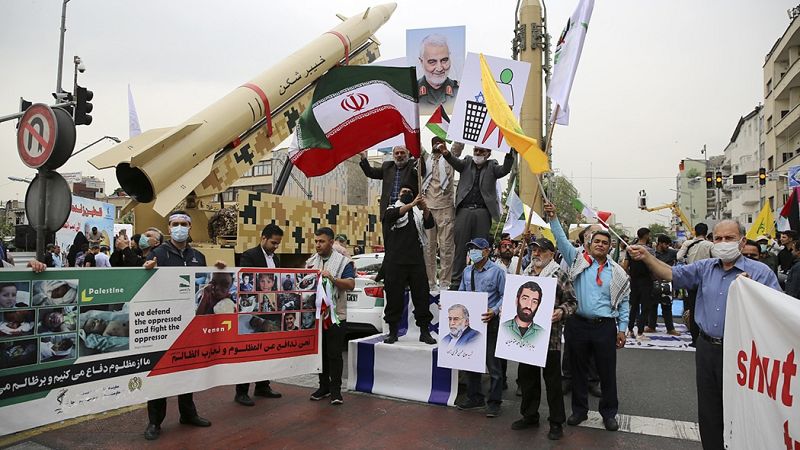
The IRGC announced on Sunday it had deployed the Kheibar Shekan, Iran's latest medium-range solid-fuel ballistic missile, indicating that its rocket attacks on Israel so far did not include "all armed capabilities yet" and signalling the possibility of future escalation.
The Kheibar Shekan is an 11.4-metre-long, third-generation solid-fuel missile introduced in 2022 with a range of 1,450 kilometres.
It is considered to be one of the most prominent technical developments of the Iranian missile programme, boasting a high degree of accuracy thanks to a satellite guidance system, in addition to manoeuvrable warheads.
It is particularly notable for its versatility due to its relatively small size and the fact that it can be fired from different launchers.
According to reports, the Kheibar Shekan can even be launched from commercial vehicles, which makes it challenging to identify and destroy before it is deployed.
The high-explosive warhead weighs approximately 550 kilograms. According to Iranian state media reports, the Kheibar Shekan can achieve a top speed of between Mach 2 and 3 on impact, making it very difficult to intercept, even for advanced defence systems such as the Patriot and David's Sling.
The missile was designed by "scientists of the IRGC Air Force," according to Iran's semi-official Mehr news agency. In 2022, it was unveiled by General Mohammad Bagheri, the Iranian Armed Forces Chief of Staff, who was killed in recent Israeli strikes.
The Kheibar Shekan was reportedly first used in the "Sadiq Promise 1" and "Sadiq Promise 2" attacks in April and October 2024, when Iran launched some 180 missiles on Israel following the assassinations of Hezbollah leader Hassan Nasrallah and IRGC Commander Abbas Nilforoushan.
What is the difference between Kheibar and Kheibar Shekan?
Although the Kheibar Shekan is often reported as being part of the larger Kheibar family of missiles, the two are separate in design, features and purpose.
The first version of the Kheibar missile dates back to 2017, when Tehran unveiled the Khorramshahr-1, which was 13 metres long and 1.5 metres in diameter, at a military parade on the occasion of "Holy Defence Week".
The second generation, named Khorramshahr-2, appeared in 2019, featuring guided warheads and a total weight of 20 tonnes.
This was followed by the fourth generation, Khorramshahr-4, unveiled in May 2023, although Iran has not revealed whether the third iteration, Khorramshahr-3, was developed or what its features might be.
However, military sources confirmed that it exists and has advanced capabilities that have not been disclosed for security reasons.
The Kheibar is characterised by design features that reduce its ability to be monitored or intercepted, most notably the absence of ailerons, which reduces the area of friction and increases its speed and accuracy, according to reports.
The Kheibar missile has a total range of 2,000 kilometres and a maximum speed of more than Mach 8.
What does the name symbolise?
The Kheibar Shekan, meaning "Breaker of Khaybar", was named after the historical Battle of Khaybar between the early Muslims and the Jewish community in today's Saudi Arabia in 628.
In Shia-majority Iran, the Battle of Khaybar holds additional religious significance, as Imam Ali bin Abi Talib — considered the first successor to Prophet Muhammad — played a prominent role in the battle.
The battle's religious context also reinforces Tehran's narratives, couching the conflict with Israel as "historical" and "ideological" despite the original battle taking place some 14 centuries ago.
The implicit reference to the expulsion of the Jewish community from the peninsula at the time — the end result of the Battle of Khaybar — is also believed to be a hint at Tehran's goal of eliminating the modern-day State of Israel.
The Kheibar missile likewise derives its name from the same context. Its missile family is also known by its other name, Khorramshahr, which was derived from the eponymous Iranian city that was the site of a major battle in 1982 during the Iran-Iraq War.
This article was updated with further background on the difference between the Kheibar Shekan and Kheibar missiles.







